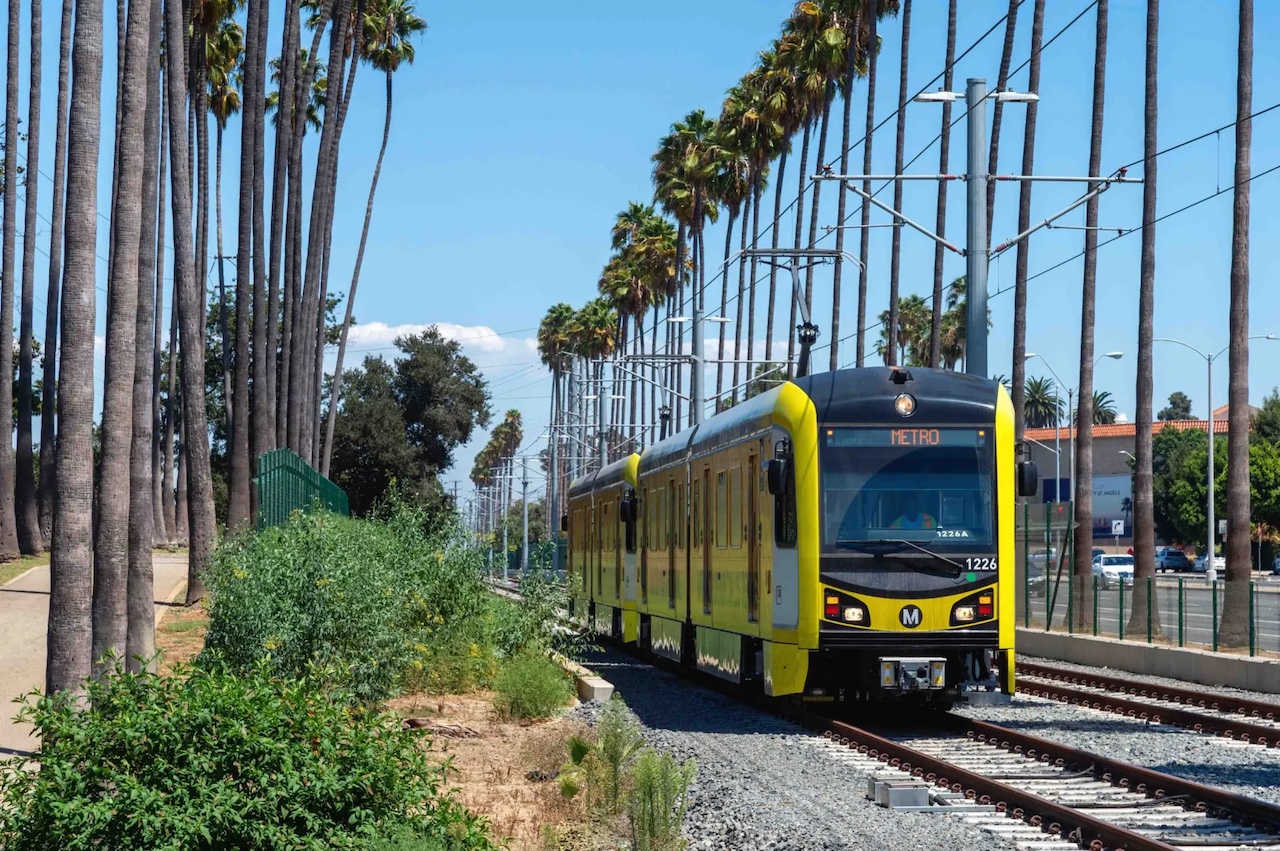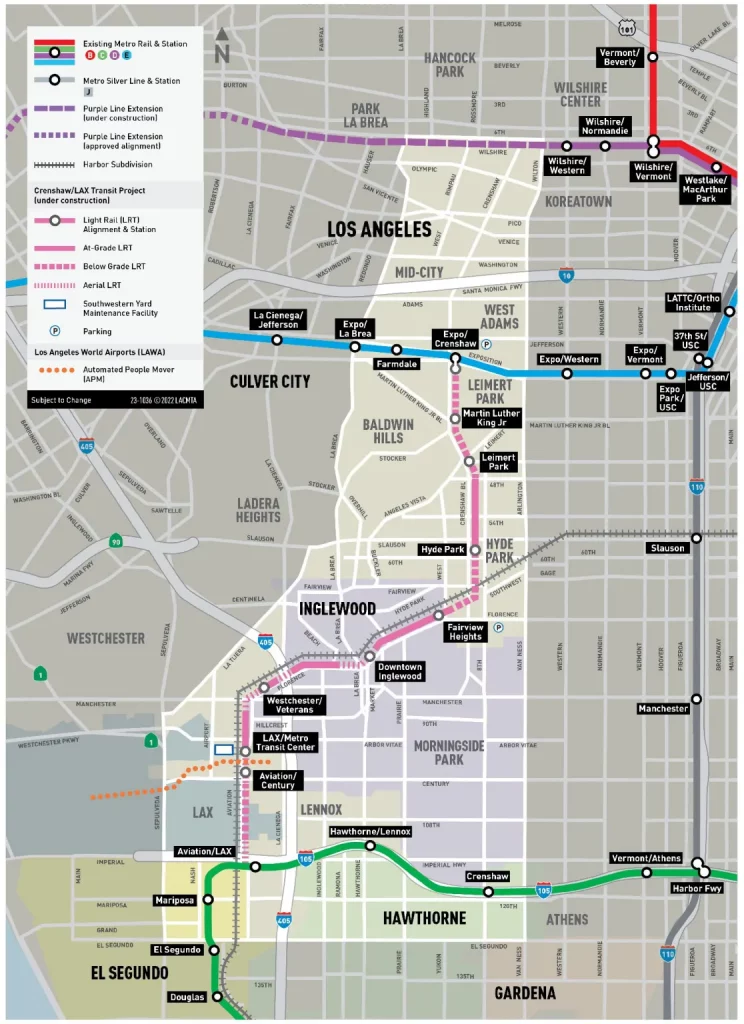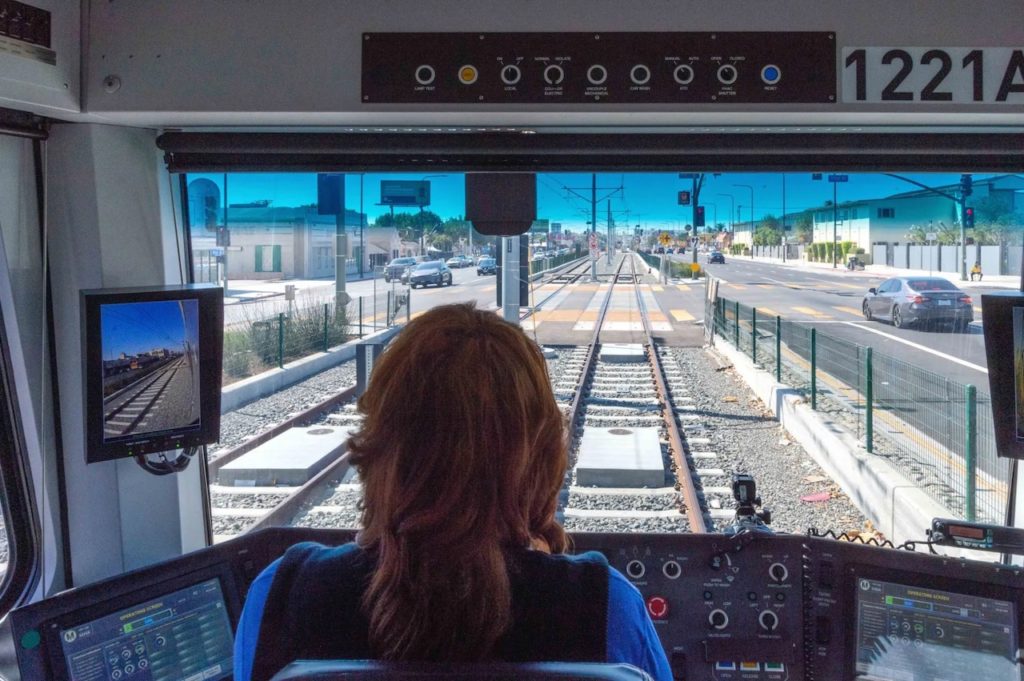LA Metro’s K Line Light Rail to Open in October

[ad_1]
Written by
Carolina Worrell, Senior Editor

The K Line next to Edward Vincent Jr. Park in Inglewood. (Metro)
The Los Angeles County Metropolitan Transportation Authority (Metro) announced on Sept. 22 that it will officially open the K Line, formerly known as the Crenshaw/LAX Line, to the public shortly after noon on Friday, Oct. 7. In celebration, Metro will be offering free rides on the entire Metro Bus and Rail System, including Metro Bike Share, opening weekend.
The K Line extends from E Line (Expo) at Expo/Crenshaw Station and eventually merges with C Line (Green) at Aviation/LAX Station, connecting the Crenshaw Corridor, Inglewood and El Segundo. It brings a “new era of equitable transportation investment that connects the Crenshaw Corridor and Inglewood residents to convenient, fast, reliable and low-cost rail transit that has not served the area since the Los Angeles Railway’s Yellow Cars shut down service in the 1950s,” Metro says.
According to Metro, the K Line’s Expo/Crenshaw, Martin L. King Jr., Leimert Park, Hyde Park, Fairview Heights, Downtown Inglewood and Westchester/Veterans stations will open first. The K Line’s Aviation/Century station is projected to open in late 2023 and will provide access to Los Angeles International Airport (LAX). The LAX/Metro Transit Center Station along the new K Line tracks is planned to open in late 2024 and will provide easy transfers between Metro and the LAX Automated People Mover that will serve airport terminals, the agency says.

“The wait is over! We have completed our official line testing and will soon bring new rail service to Los Angeles County residents,” said Glendale City Council Member and Metro Board Chair and Ara J. Najarian. “The K Line fulfills our promise to build a first-class project that will better connect the Crenshaw Corridor and Inglewood to our region’s transit system and make it far easier to reach the Crenshaw Corridor, Inglewood and LAX without the hassle of traffic congestion, high gas prices and parking.”
Once the K Line opens, Metro says its riders will be able to visit cultural events and venues in the historic Crenshaw Corridor, public parks and major venues in Inglewood, and have easier access to medical facilities and job and commerce centers throughout Los Angeles. Many of the key destinations along the K Line are within walking distance of the stations.

“The K Line will have a solid presence in the heart of the Crenshaw Corridor and Inglewood; it represents a new gateway to jobs, education and healthcare,” said Metro Board First Vice Chair Jacquelyn Dupont-Walker. “The K Line will provide riders with easy access to high density housing, popular restaurants, shopping and entertainment venues ranging from Leimert Park Village to SoFi Stadium.”
According to Metro, the K Line was designed and built with the help of community input and local voices. This transit project, Metro says, “ushered in model programs that are now used on all of Metro’s major construction projects.” For example, according to the agency, this was the first project to employ Metro’s Board approved small business mitigation programs: the Business Interruption Fund, Business Solution Center, and Eat, Shop, Play—all which helped to support small businesses in this corridor during construction. The Business Interruption Fund awarded more than $20.1 million to more than 230 small “mom and pop” shops; Metro’s Business Solution Center provided hands-on business development, support services and referrals to partnering business resources providers to more than 300 small businesses; and the Eat Shop Play program provided free marketing assistance to more than 150 businesses along the K Line alignment.
Metro says it also implemented a Project Labor Agreement (PLA) and Construction Careers Policy (CCP) to “encourage construction employment and training opportunities” as the K Line was built. According to the agency more than 60% of construction workers hired by Metro’s prime contractors on the K Line project were from economically disadvantaged areas, 23% were hired as apprentices to start their careers in construction and 10% were those with social barriers that made it hard for them to find employment. PLA/CCP workers included 63% who were Latino, 11% African American and 3% female.
[ad_2]
Source link
